History of Bangladesh
From Wikipedia, the free encyclopedia
Part of a series on the
|
|---|
| History of Bangladesh |
 |
| Timeline |
| Bangladesh portal |
| Part of a series on the |
| Culture of Bangladesh |
|---|
| Religion |
Modern Bangladesh emerged as an independent nation in 1971 after achieving independence from Pakistan in the Bangladesh Liberation War. The country's borders coincide with the major portion of the ancient and historic region of Bengal in the eastern part of the Indian subcontinent, where civilization dates back over four millennia, to the Copper Age. The history of the region is closely intertwined with the history of Bengal and thehistory of India.https://en.wikipedia.org/wiki/History_of_Bangladesh
The area's early history featured a succession of Indian empires, internal squabbling, and a tussle between Hinduismand Buddhism for dominance. Islam became dominant in 13th century when Sunni missionaries arrived. Later, Muslim rulers reinforced the process of conversion by building masaajid (mosques), and madrassas.
The borders of modern Bangladesh were established with thepartition of Bengal and India in August 1947, when the region became East Pakistan as a part of the newly formed State of Pakistan following the Radcliffe Line.[1] However, it was separated from West Pakistan by 1,600 km (994 mi) of Indian territory. Due to political exclusion, ethnic and linguistic discrimination, as well as economic neglect by the politically dominant western-wing, popular agitation and civil disobedience led to the war of independence in 1971. After independence, the new state endured famine, natural disasters and widespread poverty, as well as political turmoil and military coups. The restoration of democracy in 1991 has been followed by relative calm and economic progress.
Contents
[hide]- 1Etymology of Bengal
- 2Ancient period
- 3Early Middle Ages
- 4Late Middle Ages - Advent of Islam
- 5Mughal period
- 6The Nawabs of Bengal
- 7Europeans in Bengal
- 8British rule
- 9Movement for self-rule and Establishment of Pakistan
- 10People's Republic of Bangladesh
- 11See also
- 12References
- 13Sources
- 14Further reading
- 15External links
Etymology of Bengal[edit]
See also: History of Bengal
The exact origin of the word Bangla or Bengal is unknown. According to Mahabharata, Purana, HarivamshaVanga was one of the adopted sons of King Vali who founded the Vanga Kingdom.[2] The earliest reference to "Vangala" (Bôngal) has been traced in the Nesari plates (805 AD) of the south Indian ruler RashtrakutaGovinda III, who invaded northern India in the 9th century,[3] which speak of Dharmapala as the king of Vangala. The records of Rajendra Chola I of the Chola dynasty, who invaded Bengal in the 11th century, speak of Govindachandra as the ruler of Vangaladesa.[4][5][6] Shams-ud-din Ilyas Shah took the title "Shah-e-Bangalah" and united the whole region under one government for the first time.[7]
The Vanga Kingdom (also known as Banga) was located in the eastern part of the Indian Subcontinent, comprising part of West Bengal, India and present-day modern Bangladesh. Vanga and Pundra were two dominant tribes in Bangladesh in ancient time.
Ancient period[edit]
Pre-historic Bengal[edit]https://en.wikipedia.org/wiki/History_of_Bangladesh
Main article: South Asian Bronze Age
Many of archeological excavations in Bangladesh revealed evidences of the Northern Black Polished Ware culture (abbreviated NBPW or NBP) of the Indian Subcontinent (c. 700–200 BC) which was an Iron Ageculture developed beginning around 700 BC and peaked from c. 500–300 BC, coinciding with the emergence of 16 great states ormahajanapadas in Northern India, and the subsequent rise of theMauryan Empire.[8][9] The eastern part of ancient India, covering much of current days Bangladesh was part of one of such mahajanapadas, the ancient kingdom of Anga,[10] which flourished in the 6th century BCE.[11]
Linguistically, the oldest population of this land may have been speakers of Dravidian languages, such as the Kurux, or perhaps ofAustroasiatic languages such as the Santals. Subsequently, people speaking languages from other language families, such as Tibeto-Burman, settled in Bengal. Indic Bengali represents the latest settlement.
While western Bangladesh, as part of Magadha, became part of the Indo-Aryan civilization by the 7th century BCE, the Nanda Dynasty was the first historical state to unify all of Bangladesh under Indo-Aryan rule. Later after the rise of Buddhism many missionaries settled in the land to spread the religion and established many monuments such as Mahasthangarh
Overseas Colonization[edit]
The Vanga Kingdom was a powerful seafaring nation of Ancient India. They had overseas trade relations withJava, Sumatra and Siam (modern day Thailand). According to Mahavamsa, the Vanga prince Vijaya Singhaconquered Lanka (modern day Sri Lanka) in 544 BC and gave the name "Sinhala" to the country. Bengali people migrated to the Maritime Southeast Asia and Siam (in modern Thailand), establishing their own colonies there.[7]
Gangaridai Empire[edit]
Main article: Gangaridai
Though north and west Bengal were part of the empire southern Bengal thrived and became powerful with her overseas trades. In 326 BCE, with the invasion ofAlexander the Great the region again came to prominence. The Greek and Latin historians suggested that Alexander the Great withdrew from India anticipating the valiant counterattack of the mighty Gangaridai empire that was located in the Bengal region. Alexander, after the meeting with his officer, Coenus, was convinced that it was better to return. Diodorus Siculus mentions Gangaridai to be the most powerful empire in India whose king possessed an army of 20,000 horses, 200,000 infantry, 2,000 chariots and 4,000 elephants trained and equipped for war. The allied forces of Gangaridai Empire and Nanda Empire (Prasii) were preparing a massive counterattack against the forces of Alexander on the banks of Ganges. Gangaridai, according to the Greek accounts, kept on flourishing at least up to the 1st century AD.
Early Middle Ages[edit]
The pre-Gupta period of Bengal is shrouded with obscurity. Before the conquest of Samudragupta Bengal was divided into two kingdoms: Pushkarana and Samatata. Chandragupta II had defeated a confederacy ofVanga kings resulting in Bengal becoming part of the Gupta Empire.
The Pala dynasty[edit]
Main article: Pala Empire
Pala dynasty were the first independent Buddhist dynasty of Bengal. The name Pala (Bengali: পাল pal) means protector and was used as an ending to the names of all Pala monarchs. The Palas were followers of the Mahayanaand Tantric schools of Buddhism. Gopala was the first ruler from the dynasty. He came to power in 750 in Gaur, after being elected by a group of feudal chiefs.[12][13] He reigned from 750 to 770 and consolidated his position by extending his control over all of Bengal. The Buddhist dynastylasted for four centuries (750-1120 AD) and ushered in a period of stability and prosperity in Bengal. They created many temples and works of art as well as supported the Universities of Nalanda and Vikramashila. Somapura Mahavihara built by Dharmapala is the greatest Buddhist Vihara in theIndian Subcontinent.
The empire reached its peak underDharmapala and Devapala. Dharmapala extended the empire into the northern parts of the Indian Subcontinent. This triggered once more for the control of the subcontinent. Devapala, successor of Dharmapala, expanded the empire considerably. The Pala inscriptions credit him with extensive conquests in hyperbolic language. The Badal pillar inscription of his successor Narayana Pala states that he became the suzerain monarch or Chakravarti of the whole tract of Northern India bounded by the Vindhyas and the Himalayas. It also states that his empire extended up to the two oceans (presumably the Arabian Sea and the Bay of Bengal). It also claims that Devpala defeated Utkala (present-day Orissa), the Hunas, the Dravidas, theKamarupa (present-day Assam), the Kambojas and the Gurjaras.[14] These claims about Devapala's victories are exaggerated, but cannot be dismissed entirely: there is no reason to doubt his conquest of Utkala and Kamarupa. Besides, the neighbouring kingdoms of Rashtrakutas and the Gurjara-Pratiharas were weak at the time, which might have helped him extend his empire.[15] Devapala is also believed to have led an army up to the Indus river in Punjab.[14]
The death of Devapala ended the period of ascendancy of the Pala Empire and several independent dynasties and kingdoms emerged during this time. However, Mahipala − I rejuvenated the reign of the Palas. He recovered control over all of Bengal and expanded the empire. He survived the invasions ofRajendra Chola of the Chola dynasty and the Western Chalukya Empire from southern India. After Mahipala − I the Pala dynasty again saw its decline untilRamapala, the last great ruler of the dynasty, managed to retrieve the position of the dynasty to some extent. He crushed the Varendra rebellion and extended his empire farther to Kamarupa, Odisha and northern India.
The Pala Empire can be considered as the golden era of Bengal. Never had the Bengali people reached such height of power and glory to that extent. Palas were responsible for the introduction of Mahayana Buddhism in Tibet,Bhutan and Myanmar. The Pala had extensive trade as well as influence insouth-east Asia. This can be seen in the sculptures and architectural style of the Sailendra Empire (present-day Malaya, Java, Sumatra).
During the later part of Pala rule, Rajendra Chola I of the Chola Empire frequently invaded Bengal from 1021 to 1023 CE in order to get Ganges water and in the process, succeeded to humble the rulers, acquiring considerable booty.[16][16] The rulers of Bengal who were defeated by Rajendra Chola were Dharmapal, Ranasur and Govindachandra of the Candra Dynasty who might have been feudatories under Mahipala of the Pala Dynasty.[16] The invasion of the south Indian ruler Vikramaditya VI of the Western Chalukya Empirebrought bodies of his countrymen from Karnataka into Bengal which explains the southern origin of the Sena Dynasty.[17] The invasions of the Chola dynasty and Western Chalukya Empire led to the decline of the Pala Dynasty in Bengal and to the establishment of the Sena dynasty
Candra Dynasty[edit]
Main article: Candra Dynasty
The Candra dynasty were a family who ruled over the kingdom of Harikela in eastern Bengal (comprising the ancient lands of Harikela, Vanga and Samatata) for roughly a century and a half from the beginning of the 10th century CE. Their empire also encompassed Vanga and Samatata, with Srichandra expanding his domain to include parts of Kamarupa. Their empire was ruled from their capital, Vikrampur (modernMunshiganj) and was powerful enough to militarily withstand the Pala Empire to the north-west. The last ruler of the Candra Dynasty Govindachandra was defeated by the south Indian Emperor Rajendra Chola I of theChola dynasty in the 11th century.[18]
Sena dynasty[edit]
Main article: Sena Empire
The Palas were followed by the Sena dynasty who brought Bengal under one ruler during the 12th century.Vijay Sen the second ruler of this dynasty defeated the last Pala emperor Madanapala and established his reign. Ballal Sena introduced caste system in Bengal and made Nabadwip the capital. The fourth king of this dynasty Lakshman Sen expanded the empire beyond Bengal to Bihar. Lakshman fled to eastern Bengal under the onslaught of the Muslims without facing them in battle. The Sena dynasty brought a period of revival in Hinduism in Bengal. A popular myth comprehended by some Bengali authors about Jayadeva, the famous Sanskrit poet of Odisha (then known as the Kalinga) and author of Gita Govinda, was one of thePancharatnas (meaning 5 gems) in the court of Lakshman Sen (although this may be disputed by some).
Deva Kingdom[edit]
The Deva Kingdom was a Hindu dynasty of medieval Bengal that ruled over eastern Bengal after the collapse Sena Empire. The capital of this dynasty was Bikrampur in present-day Munshiganj District ofBangladesh. The inscriptional evidences show that his kingdom was extended up to the present-day Comilla-Noakhali-Chittagong region. A later ruler of the dynasty Ariraja-Danuja-Madhava Dasharathadeva extended his kingdom to cover much of East Bengal.[19]
Late Middle Ages - Advent of Islam[edit]
Islam made its first appearance in the Bengal region during the 7th century AD by Arab Muslim traders andSufi missionaries, and the subsequent Muslim conquest of Bengal in the 12th century lead to the rooting of Islam across the region.[20] Beginning in 1202, a military commander from the Delhi Sultanate, Bakhtiar Khilji, overran Bihar and Bengal. He conquered Nabadwip from the old emperor Lakshman Sen in 1203.[21] and intruded into much of Bengal as far east as Rangpur and Bogra ushering Muslim rule in this part of the world.[22] Under the Muslim rulers, Bengal entered a new era as cities were developed; palaces, forts, mosques, mausoleums and gardens sprang up; roads and bridges were constructed; and new trade routes brought prosperity and a new cultural life.[23]
However, smaller Hindu states continued to exist in the Southern and the Eastern parts of Bengal till the 1450s such as the Deva dynasty. Some independent small Hindu states were also established in Bengal during the Mughal period like those of Maharaja Pratapaditya of Jessore and Raja Sitaram Ray of Burdwan. These kingdoms contributed a lot to the economic and cultural landscape of Bengal. Militarily, these served as bulwarks against Portuguese and Burmese attacks. Many of these kingdoms are recorded to have fallen during the late 1700s. While Koch Bihar Kingdom in the North, flourished during the period of 16th and the 17th centuries as well till the advent of the British.
Turkic rule[edit]
In 1203 AD, the first Muslim ruler, Muhammad Bakhtiyar Khalji, a Turk, captured Nadia and established Muslim rule. The political influence of Islam began to spread in Bengal with the conquest of Nadia, the capital city of the Sen ruler Lakshmana, by him. Bakhtiyar captured Nadia in a unique way. Sensing the presence of a strong army of Lakshmana Sen on the main route to Nadia, Bakhtyar proceeded instead through the jungle of Jharkhand. He divided his army into several groups, and he himself led a group of horsemen and advanced towards Nadia in the guise of horse-traders. In this manner, Bakhtiyar had no problem in entering through the gates of the royal palace. Shortly afterwards, Bakhityar's main army also joined him and within a short while Nadia was captured. After capturing Nadia, Bakhtiyar advanced towards Gauda (Lakhnuti), another capital of the Sena kingdom, conquered it and made it his capital in 1205. Next year, Bakhtiyar set out for an expedition to capture Tibet, but this attempt failed and he had to return to Bengal with poor health and a reduced army. Shortly afterwards, he was killed by one of his commanders, Ali Mardan Khalji.[24]Defeated Lakshman Sen and his two sons moved to a place then called Vikramapur (present-day Munshiganj District in Bangladesh), where their diminished dominion lasted until the late 13th century.
Khilji maliks[edit]
The period after Bakhtiar Khilji's death in 1207 devolved into infighting among the Khiljis - representative of a pattern of succession struggles and intra-empire intrigues during later Turkic regimes. Ghiyasuddin Iwaz Khalji prevailed and extended the Sultan's domain south to Jessore and made the eastern Bang province a tributary. The capital was made at Lakhnauti on the Ganges near the older Bengal capital of Gaur. He managed to make Kamarupa and Trihut pay tribute to him. But he was later defeated by Shams-ud-DinIltutmish.
Mameluk rule[edit]
The weak successors of Iltutmish encouraged the local governors to declare independence. Bengal was sufficiently remote from Delhi that its governors would declare independence on occasion, styling themselves as Sultans of Bengal. It was during this time that Bengal earned the name "Bulgakpur" (land of the rebels). Tughral Togun Khan added Oudh and Bihar to Bengal. Mughisuddin Yuzbak also conquered Bihar and Oudh from Delhi but was killed during an unsuccessful expedition in Assam. Two Turkic attempts to push east of the broad Jamuna and Brahmaputra rivers were repulsed, but a third led by Mughisuddin Tughral conquered the Sonargaon area south of Dhaka to Faridpur, bringing the Sen Kingdom officially to an end by 1277. Mughisuddin Tughral repulsed two massive attacks of the sultanate of Delhi before finally being defeated and killed by Ghiyas ud din Balban.,
Mahmud Shahi dynasty[edit]
Mahmud Shahi dynasty started when Nasiruddin Bughra Khan declared independence in Bengal. Thus Bengal regained her independence back. Nasiruddin Bughra Khan and his successors ruled Bengal for 23 years finally being incorporated into Delhi Sultanate by Ghyiasuddin Tughlaq.
Ilyas Shahi dynasty[edit]
Shamsuddin Iliyas Shah founded an independent dynasty that lasted from 1342 to 1487. The dynasty successfully repulsed attempts by Delhi to conquer them. They continued to reel in the territory of modern-day Bengal, reaching to Khulna in the south and Sylhet in the east. The sultans advanced civic institutions and became more responsive and "native" in their outlook and cut loose from Delhi. Considerable architectural projects were completed including the massive Adina Mosque and the Darasbari Mosque which still stands in Bangladesh near the border. The Sultans of Bengal were patrons of Bengali literature and began a process in which Bengali culture and identity would flourish. During the rule of this dynasty, Bengal, for the first time, achieved its identity. Indeed, Ilyas Shah named this province as 'Bangalah' and united different parts into a single, unified territory.Ahmed, ABM Shamsuddin (2012). "Ilyas Shah". In Islam, Sirajul; Jamal, Ahmed A. Banglapedia: National Encyclopedia of Bangladesh (Second ed.). Asiatic Society of Bangladesh. The Ilyas Shahi Dynasty was interrupted by an uprising by the Hindus under Raja Ganesha. However the Ilyas Shahi dynasty was restored by Nasiruddin Mahmud Shah. Famous globe-trotter, Ibn Battuta arrived Bengal this reign.Khan, Muazzam Hussain (2012). "Ibn Battuta". In Islam, Sirajul; Jamal, Ahmed A. Banglapedia: National Encyclopedia of Bangladesh (Second ed.). Asiatic Society of Bangladesh. In his account of Bengal in his Rihla Rihla, he depicts a land full of abundance. Bengal was a progressive state with commercial links to China, Java, Ceylon. Merchant ships were available from various destinations.
Ganesha dynasty[edit]
The Ganesha dynasty began with Raja Ganesha in 1414. After Raja Ganesha seized control over Bengal he faced an imminent threat of invasion. Ganesha appealed to a powerful Muslim holy man namedQutb al Alam, to stop the threat. The saint agreed on the condition that Raja Ganesha's son Jadu would convert to Islam and rule in his place. Raja Ganesha agreed and Jadu started ruling Bengal asJalaluddin Muhammad Shah in 1415 AD. Qutb al Alam died in 1416 AD and Raja Ganesha was emboldened to depose his son and accede to the throne himself as Danujamarddana Deva. Jalaluddin was reconverted to Hinduism by the Golden Cow ritual. After the death of his father he once again converted to Islam and started ruling his second phase.[25] Jalaluddin's son, Shamsuddin Ahmad Shah ruled for only 3 years due to chaos and anarchy. The dynasty is known for their liberal policy as well as justice and charity.
Hussain Shahi dynasty[edit]
The Habshi rule gave way to the Hussain Shahi dynasty that ruled from 1494 to 1538. Alauddin Hussain Shah, considered as the greatest of all the sultans of Bengal for bringing cultural renaissance during his reign. He extended the sultanate all the way to the port of Chittagong, which witnessed the arrival of the first Portuguese merchants. Nasiruddin Nasrat Shah gave refuge to the Afghan lords during the invasion of Baburthough he remained neutral. However Nusrat Shah made a treaty with Babur and saved Bengal from a Mughal invasion. The last Sultan of the dynasty, who continued to rule from Gaur, had to contend with rising Afghan activity on his northwestern border. Eventually, the Afghans broke through and sacked the capital in 1538 where they remained for several decades until the arrival of the Mughals.
Pashtun rule[edit]
Suri dynasty[edit]
Sher Shah Suri established the Sur dynasty in Bengal. After the battle of Chausa he declared himself independent Sultan of Bengal and Bihar. Sher Shah was the only Muslim Sultan of Bengal to establish an empire in northern India. The Delhi Sultanate Islam Shah appointed Muhammad Khan Sur as the governor of Bengal. After the death of Islam Shah, Muhammad Khan Sur became independent. Muhammad Khan Sur was followed by Ghyiasuddin Bahadur Shah and Ghyiasuddin Jalal Shah. The Pashtun rule in Bengal remained for 44 years. Their most impressive achievement was Sher Shah's construction of the Grand Trunk Road connecting Sonargaon, Delhi and Kabul.
Karrani dynasty[edit]
The Sur dynasty was followed by the Karrani dynasty. Sulaiman Khan Karrani annexed Odisha to the Muslim sultanate permanently. Daoud Shah Karrani declared independence from Akbar which led to four years of bloody war between the Mughals and the Pashtuns. The Mughal onslaught against the Pashtun Sultan ended with the battle of Rajmahal in 1576, led by Khan Jahan. However, the Pashtun and the local landlords (Baro Bhuyans) led by Isa Khan resisted the Mughal invasion.
Sonargaon Sultanate[edit]
Fakhruddin Mubarak Shah ruled an independent kingdom in areas that lie within modern-day eastern and southeastern Bangladesh from 1338 to 1349 AD.[26] He was the first Muslim ruler to conquest Chittagong, the principal port of Bengal region in 1340 AD.[27] Fakhruddin's capital was Sonargaon[26] which emerged as the principal city of the region as the capital of an independent sultanate during his reign.[28]Ibn Batuta, the famous Moroccan explorer, after visiting his capital in 1346, described Shah as "a distinguished sovereign who loved strangers, particularly the fakirs and Sufis."[26][29]
Mughal period[edit]
Bengal came into the domain of Mughal Empire during the reign of Akbar after the Battle of Tukaroi which was fought in 1575 near the village of Tukaroi now in Balasore District, West Bengalbetween the Mughals and the Karrani Sultanate of Bengal and Bihar. [30] At that time Dhaka became the capital of the Mughal province of Bengal. But due to its geographical remoteness it was a bit difficult to govern the region. Especially the section east of the Brahmaputra river remained outside the mainstream Mughal influence. The Bengali ethnic and linguistic identity further crystallized during this period, since the whole of Bengal was united under an able and long-lasting administration. Furthermore, its inhabitants were given sufficient autonomy to cultivate their own customs and literature.
In 1612, during Emperor Jahangir's reign, the defeat of Sylhet completed the Mughal conquest of Bengal with the exception ofChittagong. At this time Dhaka rose in prominence by becoming the provincial capital of Bengal. Chittagong was later annexed in order to stifle Arakanese raids from the east. A well-known Dhaka landmark, Lalbagh Fort, was built during Aurangzeb's sovereignty.
Islam Khan[edit]
Islam Khan was appointed the Subahdar of Bengal in 1608 by Mughal emperor Jahangir. He ruled Bengal from his capitalDhaka which he renamed as Jahangir Nagar.[31] His major task was to subdue the rebellious Rajas, Bara-Bhuiyans, Zamindars and Afghan chiefs. He fought with Musa Khan, the leader of Bara-Bhuiyans and by the end of 1611 he was subdued.[31] Islam Khan also defeated Pratapaditya of Jessore, Ram Chandra of Bakla andAnanta Manikya of Bhulua.[31] Then he annexed the kingdoms ofKoch Bihar,
Bangladesh came to today's shape through a long history of political evolution. Bengal was probably the wealthiest part of the subcontinent up till the 16th century. The area's early history featured a succession of Indian empires, internal squabbling, and a tussle between Hinduism and Buddhism for dominance. All of this was just a prelude to the unstoppable tide of Islam which washed over northern India at the end of the 12th century. Mohammed Bakhtiar Khalzhi from Turkistan captured Bengal in 1199 with only 20 men.
Under the Mughal viceroys, art and literature flourished, overland trade expanded and Bengal was opened to world maritime trade - the latter marking the death knell of Mughal power as Europeans began to establish themselves in the region. The Portuguese arrived as early as the 15th century but were ousted in 1633 by local opposition. The East India Company negotiated terms to establish a fortified trading post in Calcutta in 1690.
The decline of Mughal power led to greater provincial autonomy, heralding the rise of the independent dynasty of the nawabs of Bengal. Humble East India Company clerk Robert Clive ended up effectively ruling Bengal when one of the impetuous nawabsattacked the thriving British enclave in Calcutta and stuffed those unlucky enough not to escape in an underground cellar. Clive retook Calcutta a year later and the British Government replaced the East India Company following the Indian Mutiny in 1857.
The Britons established an organizational and social structure unparalleled in Bengal, and Calcutta became one of the most important centers for commerce, education and culture in the subcontinent. However, many Bangladeshi historians blame the British dictatorial agricultural policies and promotion of the semi-feudal zamindar system for draining the region of its wealth and damaging its social fabric. The British presence was a relief to the minority Hindus but a catastrophe for the Muslims. The Hindus cooperated with the Brits, entering British educational institutions and studying the English language, but the Muslims refused to cooperate, and rioted whenever crops failed or another local product was rendered unprofitable by government policy.
At the closure of World War II it was clear that European colonialism had run its course and Indian independence was inevitable. Independence was attained in 1947 but the struggle was bitter and divisive, especially in Bengal where the fight for self-government was complicated by internal religious conflict. The British, realizing any agreement between the Muslims and Hindus was impossible, decided to partition the subcontinent. That Bengal and Punjab, the two overwhelmingly Muslim regions, lay on opposite sides of India was only one stumbling block. The situation was complicated in Bengal where the major cash crop, jute, was produced in the Muslim-dominated east, but processed and shipped from the Hindu-dominated city of Calcutta in the west.
Inequalities between the two regions i.e. East and West Pakistan soon stirred up a sense of Bengali nationalism that had not been reckoned with during the push for Muslim independence. When the Pakistan government declared that `Urdu and only Urdu' would be the national language, the Bangla-speaking Bengalis decided it was time to assert their cultural identity. The drive to reinstate the Bangla language metamorphosed into a push for self-government and when the Awami League, a nationalistic party, won a majority in the 1971 national elections, the president of Pakistan, faced with this unacceptable result, postponed opening the National Assembly. Riots and strikes broke out in East Pakistan, the independent state of Bangladesh was unilaterally announced, and Pakistan sent troops to quell the rebellion.
The ensuing war was one of the shortest and bloodiest of modern times, with the Pakistan army occupying all major towns, using napalm against villages, and slaughtering and raping villagers. Bangladeshis refer to Pakistan's brutal tactics as attempted genocide. Border clashes between Pakistan and India increased as Indian-trained Bangladeshi guerrillas crossed the border. When the Pakistani air force made a pre-emptive attack on Indian forces, open warfare ensued. Indian troops crossed the border and the Pakistani army found itself being attacked from the east by the Indian army, the north and east by guerrillas and from all quarters by the civilian population. In 11 days it was all over and Bangladesh, the world's 139th country, officially came into existence. Sheikh Mujib, one of the founders of the Awami League, became the country's first prime minister in January 1972 ; he was assassinated in 1975 during a period of crisis
The ruined and decimated new country experienced famine in 1973-74, followed by martial law, successive military coups and political assassinations. In 1979, Bangladesh began a short-lived experiment with democracy led by the overwhelmingly popular President Zia, who established good relationships with the West and the oil-rich Islamic countries. His assassination in 1981 ultimately returned the country to a military government that periodically made vague announcements that elections would be held `soon'. While these announcements were rapturously greeted by the local press as proof that Bangladesh was indeed a democracy, nothing came of them until 1991. That year the military dictator General Ershad was forced to resign by an unprecedented popular movement led by the Bangladesh Nationalist Party and the Awami League.
Democracy was re-established and the economy ticked along at a 4.5% growth rate, which hardly made it an 'Asian tiger' but was at least respectable. Political dog-fighting between the BNP and the Awami League became acrimonious in the run up to national elections in February 1996 leaving the country strike-ridden and rudderless. The election was marred by violence and boycotted by the three main opposition parties, resulting in a BNP shoo-in. However, low voter turnout and reports of ballot-box stuffing by polling officials raised serious questions about the government's legitimacy and in April 1996 Prime Minister Begum Khaleda agreed to stand down and appointed an interim caretaker administration, pending new elections scheduled for 12 June 1996.In the elections Awami League got the largest number of seats. Sheikh Hasina Wazed, the leader of the Awami League, was sworn in as the Prime Minister of Bangladesh Government.
| ||||||||||||
Bangladesh came to today's shape through a long history of political evolution. Bengal was probably the wealthiest part of the subcontinent up till the 16th century. The area's early history featured a succession of Indian empires, internal squabbling, and a tussle between Hinduism and Buddhism for dominance. All of this was just a prelude to the unstoppable tide of Islam which washed over northern India at the end of the 12th century. Mohammed Bakhtiar Khalzhi from Turkistan captured Bengal in 1199 with only 20 men.
Under the Mughal viceroys, art and literature flourished, overland trade expanded and Bengal was opened to world maritime trade - the latter marking the death knell of Mughal power as Europeans began to establish themselves in the region. The Portuguese arrived as early as the 15th century but were ousted in 1633 by local opposition. The East India Company negotiated terms to establish a fortified trading post in Calcutta in 1690.
The decline of Mughal power led to greater provincial autonomy, heralding the rise of the independent dynasty of the nawabs of Bengal. Humble East India Company clerk Robert Clive ended up effectively ruling Bengal when one of the impetuous nawabsattacked the thriving British enclave in Calcutta and stuffed those unlucky enough not to escape in an underground cellar. Clive retook Calcutta a year later and the British Government replaced the East India Company following the Indian Mutiny in 1857.
The Britons established an organizational and social structure unparalleled in Bengal, and Calcutta became one of the most important centers for commerce, education and culture in the subcontinent. However, many Bangladeshi historians blame the British dictatorial agricultural policies and promotion of the semi-feudal zamindar system for draining the region of its wealth and damaging its social fabric. The British presence was a relief to the minority Hindus but a catastrophe for the Muslims. The Hindus cooperated with the Brits, entering British educational institutions and studying the English language, but the Muslims refused to cooperate, and rioted whenever crops failed or another local product was rendered unprofitable by government policy.
At the closure of World War II it was clear that European colonialism had run its course and Indian independence was inevitable. Independence was attained in 1947 but the struggle was bitter and divisive, especially in Bengal where the fight for self-government was complicated by internal religious conflict. The British, realizing any agreement between the Muslims and Hindus was impossible, decided to partition the subcontinent. That Bengal and Punjab, the two overwhelmingly Muslim regions, lay on opposite sides of India was only one stumbling block. The situation was complicated in Bengal where the major cash crop, jute, was produced in the Muslim-dominated east, but processed and shipped from the Hindu-dominated city of Calcutta in the west.
Inequalities between the two regions i.e. East and West Pakistan soon stirred up a sense of Bengali nationalism that had not been reckoned with during the push for Muslim independence. When the Pakistan government declared that `Urdu and only Urdu' would be the national language, the Bangla-speaking Bengalis decided it was time to assert their cultural identity. The drive to reinstate the Bangla language metamorphosed into a push for self-government and when the Awami League, a nationalistic party, won a majority in the 1971 national elections, the president of Pakistan, faced with this unacceptable result, postponed opening the National Assembly. Riots and strikes broke out in East Pakistan, the independent state of Bangladesh was unilaterally announced, and Pakistan sent troops to quell the rebellion.
The ensuing war was one of the shortest and bloodiest of modern times, with the Pakistan army occupying all major towns, using napalm against villages, and slaughtering and raping villagers. Bangladeshis refer to Pakistan's brutal tactics as attempted genocide. Border clashes between Pakistan and India increased as Indian-trained Bangladeshi guerrillas crossed the border. When the Pakistani air force made a pre-emptive attack on Indian forces, open warfare ensued. Indian troops crossed the border and the Pakistani army found itself being attacked from the east by the Indian army, the north and east by guerrillas and from all quarters by the civilian population. In 11 days it was all over and Bangladesh, the world's 139th country, officially came into existence. Sheikh Mujib, one of the founders of the Awami League, became the country's first prime minister in January 1972 ; he was assassinated in 1975 during a period of crisis
The ruined and decimated new country experienced famine in 1973-74, followed by martial law, successive military coups and political assassinations. In 1979, Bangladesh began a short-lived experiment with democracy led by the overwhelmingly popular President Zia, who established good relationships with the West and the oil-rich Islamic countries. His assassination in 1981 ultimately returned the country to a military government that periodically made vague announcements that elections would be held `soon'. While these announcements were rapturously greeted by the local press as proof that Bangladesh was indeed a democracy, nothing came of them until 1991. That year the military dictator General Ershad was forced to resign by an unprecedented popular movement led by the Bangladesh Nationalist Party and the Awami League.
Democracy was re-established and the economy ticked along at a 4.5% growth rate, which hardly made it an 'Asian tiger' but was at least respectable. Political dog-fighting between the BNP and the Awami League became acrimonious in the run up to national elections in February 1996 leaving the country strike-ridden and rudderless. The election was marred by violence and boycotted by the three main opposition parties, resulting in a BNP shoo-in. However, low voter turnout and reports of ballot-box stuffing by polling officials raised serious questions about the government's legitimacy and in April 1996 Prime Minister Begum Khaleda agreed to stand down and appointed an interim caretaker administration, pending new elections scheduled for 12 June 1996.In the elections Awami League got the largest number of seats. Sheikh Hasina Wazed, the leader of the Awami League, was sworn in as the Prime Minister of Bangladesh Government.
| ||||||||||||
Copyright © Bangla2000. All Rights Reserved.
Official Name | ||
আমার সোনার বাংলা হইছে শোষন আজ ভারতের হাতে ,আহ ;www.google.bd




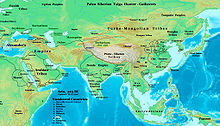



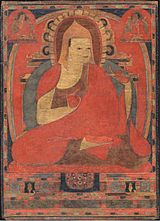

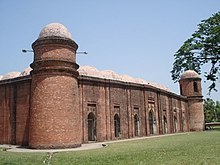

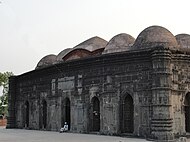



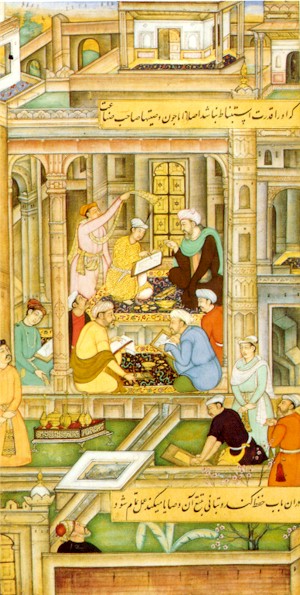
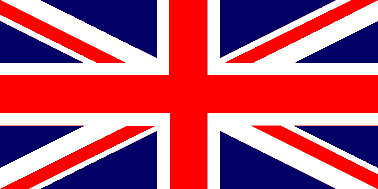
No comments:
Post a Comment